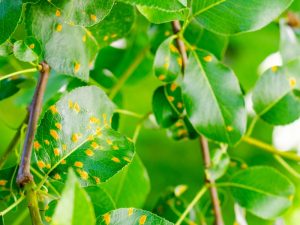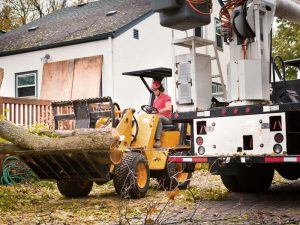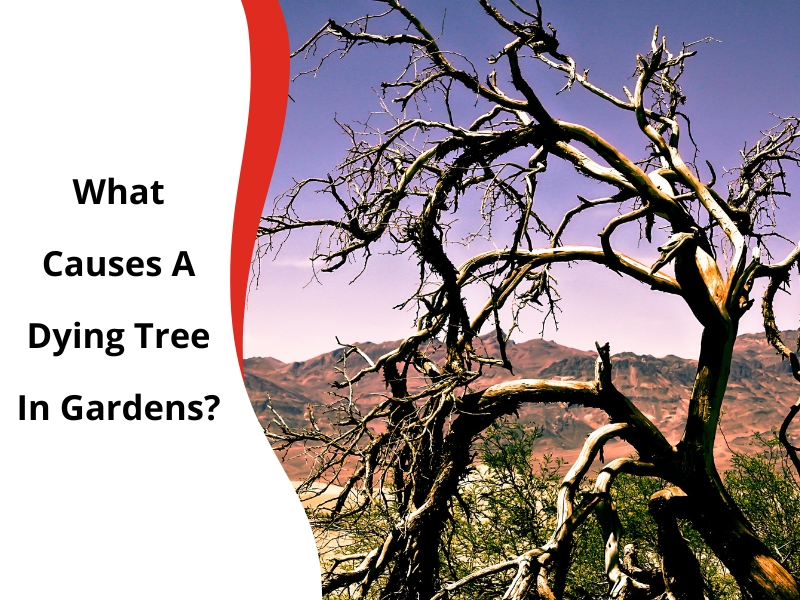Gardens bring life and beauty to our homes. Trees, in particular, play a vital role in the ecosystem. However, seeing a dying tree can be distressing for any gardener. Understanding the causes of a dying tree is essential for ensuring the health of your garden. This article explores the signs of a dying tree, the factors contributing to its decline, and how to take preventive measures.
What signs indicate that your tree is dying?
Detecting a dying tree early can help you take action before it’s too late. Here are some key signs to watch for:
- Leaf discolouration: Yellowing leaves or a sudden drop in foliage can indicate stress.
- Brittle or broken branches: If branches snap easily, it may suggest the tree is weak.
- Peeling bark: Bark peeling away or with deep cracks can signal underlying issues.
- Excessive sap: An unusual amount can indicate a problem, such as injury or disease.
- Fungal growth: Fungi or mushrooms at the base can suggest decay or root problems.
Recognising these signs early can help you decide whether your tree needs attention.
What environmental factors can lead to a dying tree?
Environmental conditions can significantly impact a tree’s health. Here are some common factors that contribute to a dying tree:
- Drought: Insufficient water can cause stress and lead to decline.
- Soil quality: Poor or compacted soil can hinder root growth and nutrient uptake.
- Weather extremes: Severe weather can damage trees, including storms and heat waves.
- Pollution: Chemicals in the air or soil can harm a tree’s health.
- Nearby construction: Disturbance around the tree’s root zone can affect its stability and nutrient supply.
Understanding these environmental factors can help create a more supportive environment for your trees.
How do pests and diseases cause trees to die?

Pests and diseases pose significant threats to tree health. Here are some ways they can lead to a dying tree:
- Insect infestations: Pests like borers can damage the tree’s structure and sap flow.
- Fungal infections: Diseases caused by fungi can decay wood and bark, weakening the tree.
- Bacterial infections: Certain bacteria can lead to wilting and cankers, affecting the tree’s vitality.
- Nematodes: These microscopic worms can invade roots, causing significant damage.
- Root Rot: Often, due to overwatering or poor drainage, this disease can decimate the root system.
Regular inspections can help identify and address these issues before they escalate.
How can poor maintenance cause trees to struggle?
Proper maintenance is crucial for tree health. Poor care can lead to a dying tree. Here are some common maintenance issues:
- Inadequate watering: More water can stress the tree, especially during dry periods.
- Improper pruning: Over-pruning or incorrect cuts can damage the tree and expose it to pests.
- Neglecting fertilisation: Lack of nutrients can weaken a tree, making it more susceptible to disease.
- Ignoring mulching: Mulch helps retain moisture. Not using it can lead to drying out.
- Failure to inspect: Regular checks for signs of stress or damage are essential for early intervention.
Maintaining your trees properly can enhance their resilience and longevity.
When should you consider tree removal?

Deciding when it’s time to remove a tree can be difficult. Knowing when it’s necessary is crucial. Choosing a tree removal service that can assess the situation accurately is equally essential. Here are some scenarios where tree removal might be required:
- Severe damage: If a tree is extensively damaged or decayed, it may pose a safety risk.
- Significant leaning: A tree leaning precariously may need to be removed to prevent falls.
- Disease spread: Removal might be the best option if the tree is infected with a disease that could spread.
- Root issues: Deep-root damage can compromise stability, leading to potential hazards.
- Obstruction: Removal may be needed if a tree obstructs structures or utilities and cannot be pruned.
What are the consequences of ignoring a dying tree?
Ignoring a dying tree can lead to several adverse outcomes. Here are some potential consequences:
- Safety hazards: A dying tree can fall, posing risks to people and property. Falling branches can cause injuries or fatalities, particularly during storms or high winds.
- Increased costs: Delaying action can lead to higher removal or repair costs. Emergency tree removal services are often more expensive than planned removals, placing an additional financial burden on property owners.
- Spread of pests/diseases: A dying tree can harbour pests or diseases that affect nearby healthy trees. This can lead to a widespread decline in plant health across your garden, resulting in more extensive damage.
- Impact on landscape: A dead tree can detract from your garden’s appearance and overall health. It may also decrease property value, as prospective buyers often see a dying tree as a maintenance issue.
- Soil degradation: Decaying roots can affect the soil quality for surrounding plants. This degradation can lead to nutrient imbalances, making it harder for healthy plants to thrive.
Taking timely action can prevent these problems from escalating. Addressing a dying tree promptly protects your property and preserves your garden’s beauty and health.
How can you prevent your tree from dying?
Prevention is vital to maintaining tree health. Here are some effective strategies to help keep your trees vibrant:
- Regular watering: Ensure your tree receives adequate water, especially during dry spells.
- Soil testing: Test your soil to ensure it has the proper nutrients and pH levels.
- Routine inspections: Regularly check for signs of pests, diseases, or damage.
- Proper pruning: Prune correctly to promote healthy growth and remove dead or diseased branches.
- Mulching: Apply mulch to retain moisture and regulate soil temperature.
While regular inspections can help identify early signs of trouble, training on diagnosing tree diseases can equip you with the knowledge to address issues promptly.
Let the experts help
If you’re concerned about a dying tree in your garden, it may be time to seek professional help. Watson Demolition & Site Services can remove your dying tree and ensure your garden remains safe and beautiful. Our team is equipped to handle tree-related issues, from assessments to removals. Don’t wait until it’s too late—contact Watson Demolition & Site Services today!



